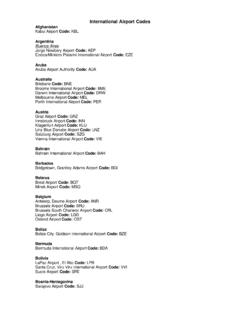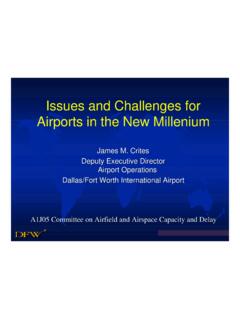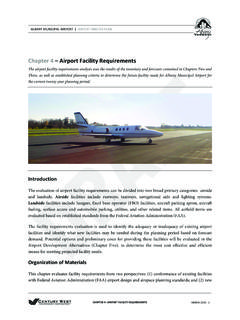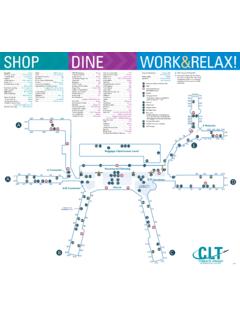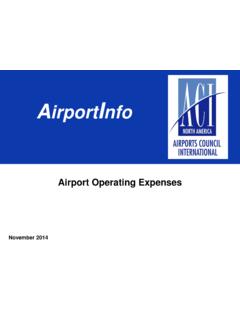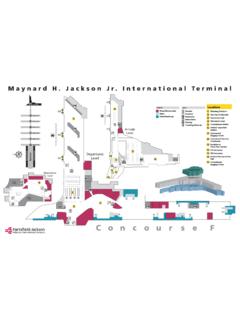Transcription of Airport Privatization: Issues and Options for Congress
1 Airport privatization : Issues and Options for Congress Rachel Y. Tang Analyst in Transportation and Industry August 16, 2017 Congressional Research Service 7-5700 R43545 Airport privatization : Issues and Options for Congress Congressional Research Service Summary In 1996, Congress established the Airport privatization Pilot Program (APPP; 49 47134; Section 149 of the Federal Aviation Reauthorization Act of 1996, 104-264) to increase access to sources of private capital for Airport development and to make airports more efficient, competitive, and financially viable. Participation in the program has been very limited, in good part because major stakeholders have different, if not contradictory, objectives and interests. Only two commercial service airports have completed the privatization process established under the APPP.
2 One of those, Stewart International Airport in New York State, subsequently reverted to public ownership. Luis Mu oz Mar n International Airport in San Juan, Puerto Rico, is now the only Airport with a private operator under the provisions of the APPP. As of August 2017, there are three active applicants in the APPP: Hendry County Airglades Airport in Clewiston, FL; Westchester County Airport in White Plains, NY; and St. Louis Lambert International Airport in St. Louis, MO. Increasing interest in Airport privatization is likely to require a number of significant policy changes, including the following: Making privatization more attractive to public-sector owners by facilitating the use of privatization revenue for non- Airport purposes. Providing similar tax treatment to bonds issued by public-sector and private-sector Airport operators, as public-sector operators now have access to less costly long-term finance than private operators.
3 Easing requirements for private owners to comply with assurances previously made by public-sector owners to obtain federal Airport Improvement Program (AIP) grants. Accelerating the application and approval procedures for the APPP. Airport privatization : Issues and Options for Congress Congressional Research Service Contents Introduction .. 1 Overview of Airport privatization .. 1 Types of Airport privatization .. 1 The Interests at Stake .. 2 The Airport privatization Pilot Program .. 4 Participation in APPP .. 5 Stewart International Airport .. 6 Chicago Midway Airport .. 7 Luis Mu oz Mar n International Airport .. 8 Active Applicants .. 8 Why Has the APPP Not Stimulated privatization ? .. 9 APPP Application 9 Regulatory Conditions and Obligations .. 9 Adequate Access to Funding .. 10 Airport privatization in Europe and 11 Europe.
4 11 Canada .. 12 Issues and Options .. 14 Figures Figure 1. Levels of Airport privatization .. 2 Tables Table 1. Full Airport privatization Under the APPP vs. Outside the APPP .. 5 Table 2. Participation in the 6 Appendixes Appendix. Airport Definitions .. 16 Contacts Author Contact Information .. 16 Airport privatization : Issues and Options for Congress Congressional Research Service 1 Introduction Almost all commercial service airports in the United States are owned by local and state governments, or by public entities such as Airport authorities or multipurpose port In 1996, Congress established the Airport privatization Pilot Program (APPP)2 to explore the prospect of privatizing publicly owned airports and using private capital to improve and develop them. In addition to reducing demand for government funds, privatization has been promoted as a way to make airports more efficient and financially viable.
5 Participation in the APPP has been very limited. Only two airports have completed the privatization process, and one of them later reverted to public ownership. Owners of other airports considered privatization , but eventually chose not to proceed. The lack of interest in privatization among airports could be the result of (1) readily available financing sources for publicly owned airports; (2) barriers or lack of incentives to privatize; (3) the potential implications for major stakeholders; and (4) satisfaction with the status quo. Overview of Airport privatization privatization refers to the shifting of governmental functions, responsibilities, and sometimes ownership, in whole or in part, to the private sector. With respect to airports, privatization can take many forms up to and including the transfer of an entire Airport to private operation and/or ownership.
6 In the United States, most cases of Airport privatization fall into the category of partial privatization ; full privatization , either under or outside the APPP, has been very rare. Types of Airport privatization Figure 1 illustrates four generic Airport privatization models, from the least privatized, the award of service contracts to private firms, to the long-term transfer of an Airport out of the public sector. Service Contracts. Many airports outsource some non-core operations to private firms that specialize in those functions. Examples of operations that are frequently outsourced are cleaning and janitorial services, Airport landscaping, shuttle bus operations, and concessions in Airport terminals. This is probably the most common type of privatization among airports. 1 Commercial service airports, as defined in the Federal Aviation Administration s (FAA s) National Plan of Integrated Airport System (NPIAS), are publicly owned airports that receive scheduled passenger service and board at least 2,500 passengers a year.
7 Branson Airport in Branson, MO, is the only privately funded, privately developed, and privately operated commercial passenger Airport in the United States. However, Branson Airport is not included in the NPIAS because it is not open to all aeronautical users. 2 49 47134; Section 149 of the Federal Aviation Reauthorization Act of 1996; 104-264. Airport privatization : Issues and Options for Congress Congressional Research Service 2 Figure 1. Levels of Airport privatization Source: Airport Cooperative Research Program (ACRP) Report 66, Considering and Evaluating Airport privatization , p. 3. Modified by CRS. Management Contracts. Some airports engage the management expertise of the private sector by contracting out specific facilities or responsibilities, such as parking, terminal concessions, terminal operations, airfield signage, fuel farms, and aircraft refueling.
8 In a few cases, a private management company has been awarded a contract to manage an entire Airport for a specified term. This is a form of partial privatization . For example, Virginia-based AvPorts, a specialized aviation facilities company, has management services contracts with a number of airports, including Albany International Airport , NY (ALB) and Westchester County Airport , NY (HPN).3 Developer Financing/Operation. A wide range of contracts has been used to involve the private sector in providing financing, development, operation, and maintenance services. This is also known as the Design-Build-Finance-Operate-Maintain (DBFOM) model. Airport DBFOM examples include passenger terminals (notably Terminal 5 at Chicago O Hare International Airport and Terminal 4 at New York John F. Kennedy International Airport ), parking garages, and rental car Long-Term Lease or Sale.
9 Full privatization involves the sale or long-term lease of an Airport to a private owner or operator. Under a long-term lease or concession agreement, the Airport owner grants full management and development control to the private operator in exchange for capital improvements and other obligations such as an upfront payment and/or profit-sharing arrangements. Only two airports have successfully entered into long-term leases. Under a full sale, ownership and full responsibility for operation, capital improvements, and maintenance would be transferred to a private buyer. Several airports in Europe have been privatized in this way, but there have been no sales of commercial service airports in the United States. The Interests at Stake Airport privatization , especially in the case of long-term lease or sale, involves four major stakeholders: Airport owners, which in the United States are mostly local or regional governments or public entities; air carriers; private investors; and the federal government.
10 These stakeholders ultimately decide whether a privatization deal goes forward and they tend to have different objectives and, in many cases, divergent interests. Airline passengers may experience the effect of 3 4 Airport Cooperative Research Program (ACRP) Report 66, Considering and Evaluating Airport privatization , p. 4. Airport privatization : Issues and Options for Congress Congressional Research Service 3 privatization via, for example, Airport concession offerings, operational efficiency, and changes in prices and fees, but passenger interests are usually not represented formally in discussions of privatization . Airport owners, who are usually local governments, might opt for privatization if they could extract money for general use. However, federal regulations generally require that lease or sale revenue from Airport privatization be used only for Airport purposes (unless the majority of airlines agree otherwise, under the APPP).










